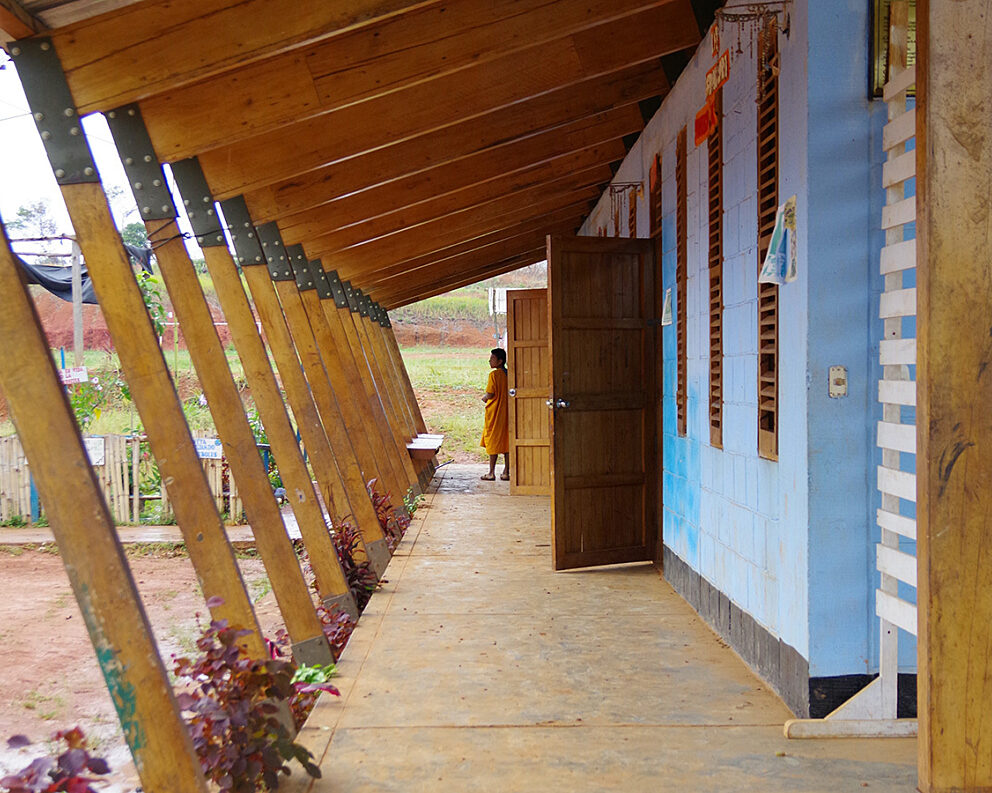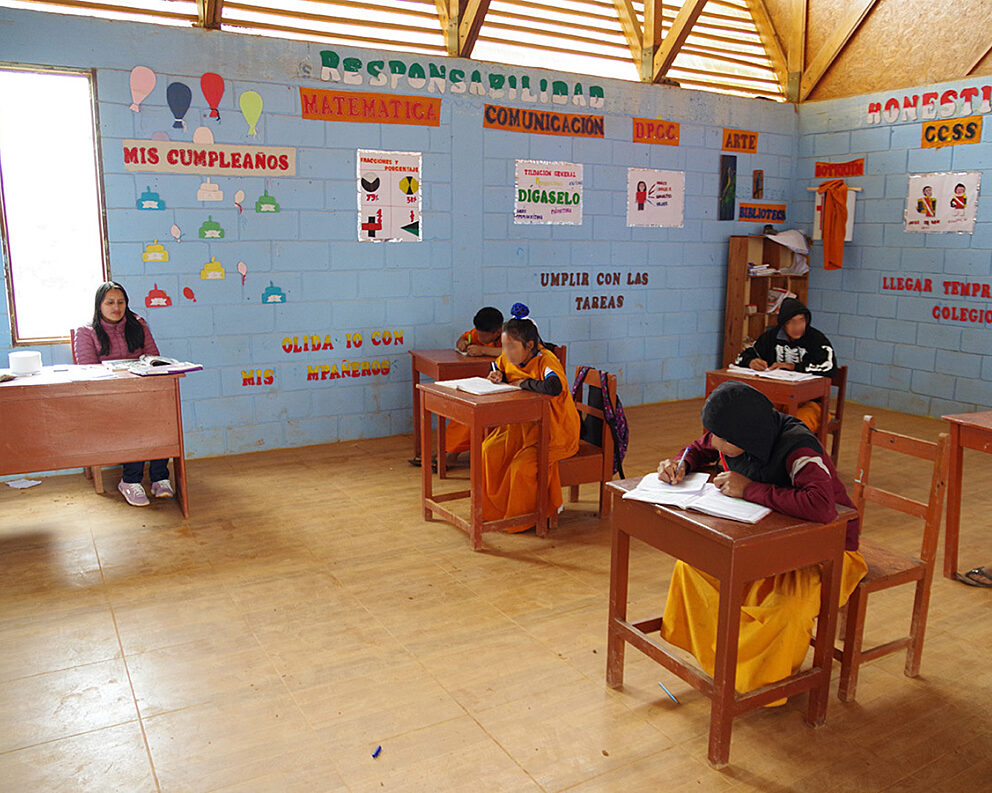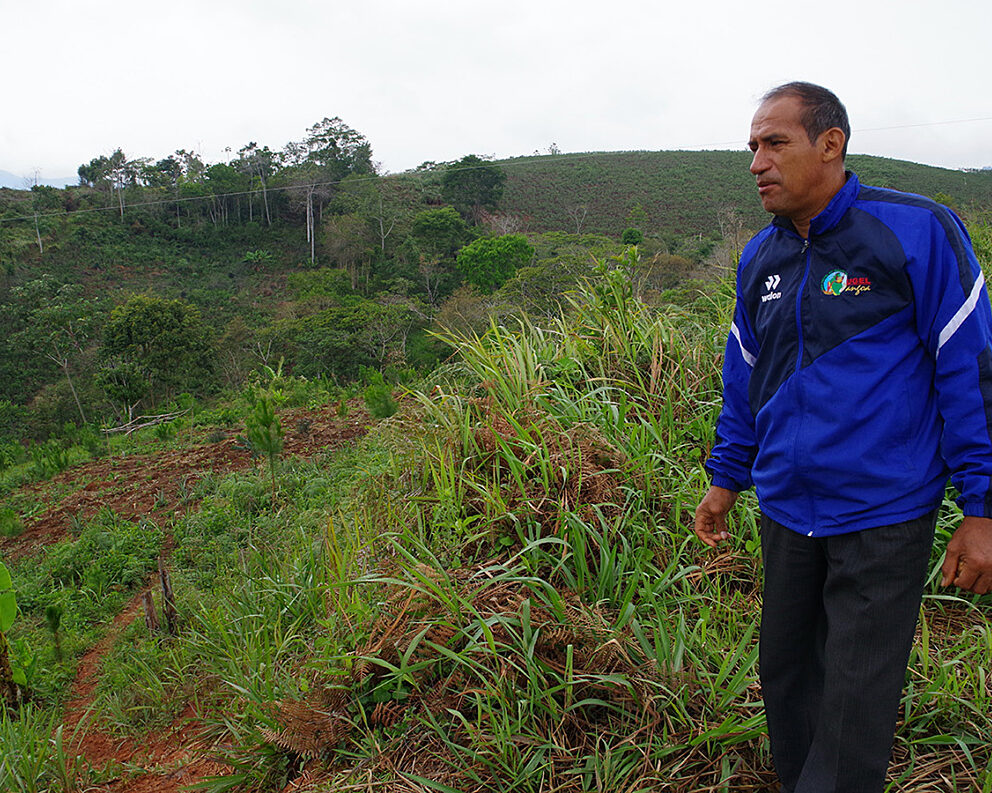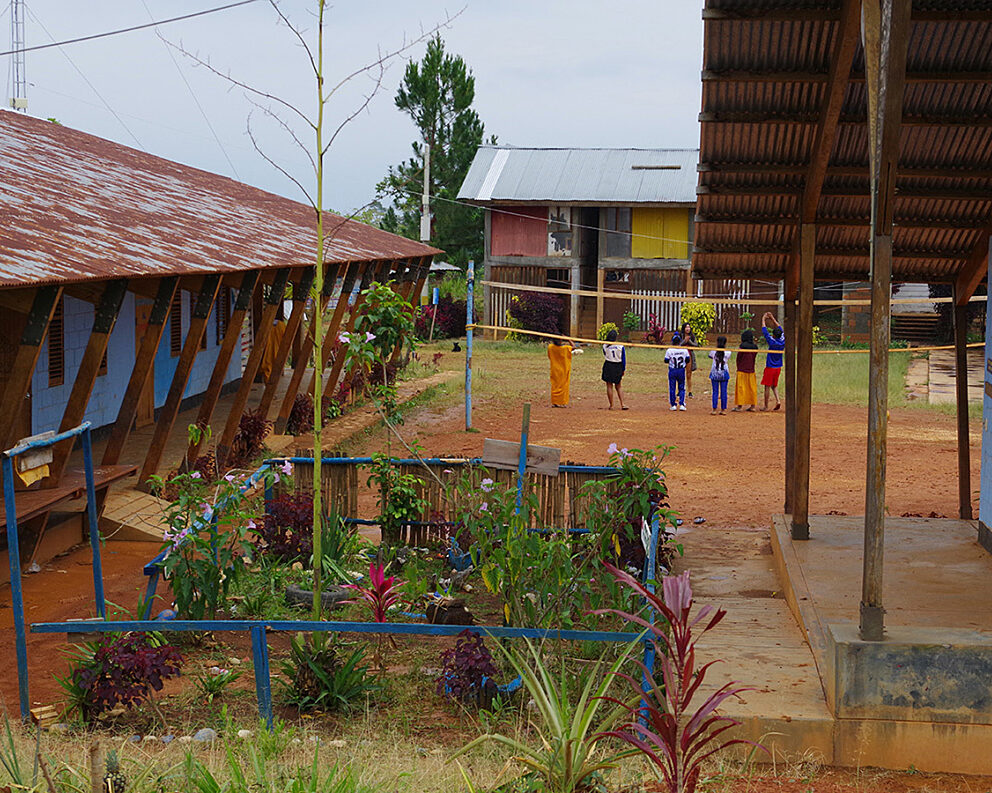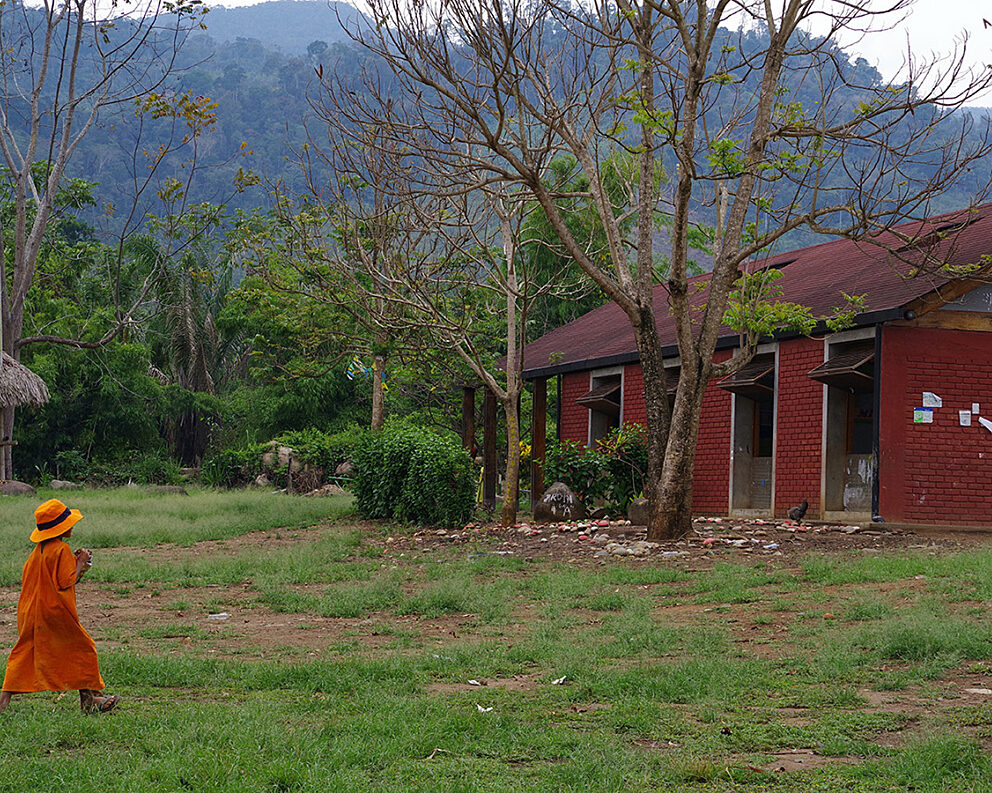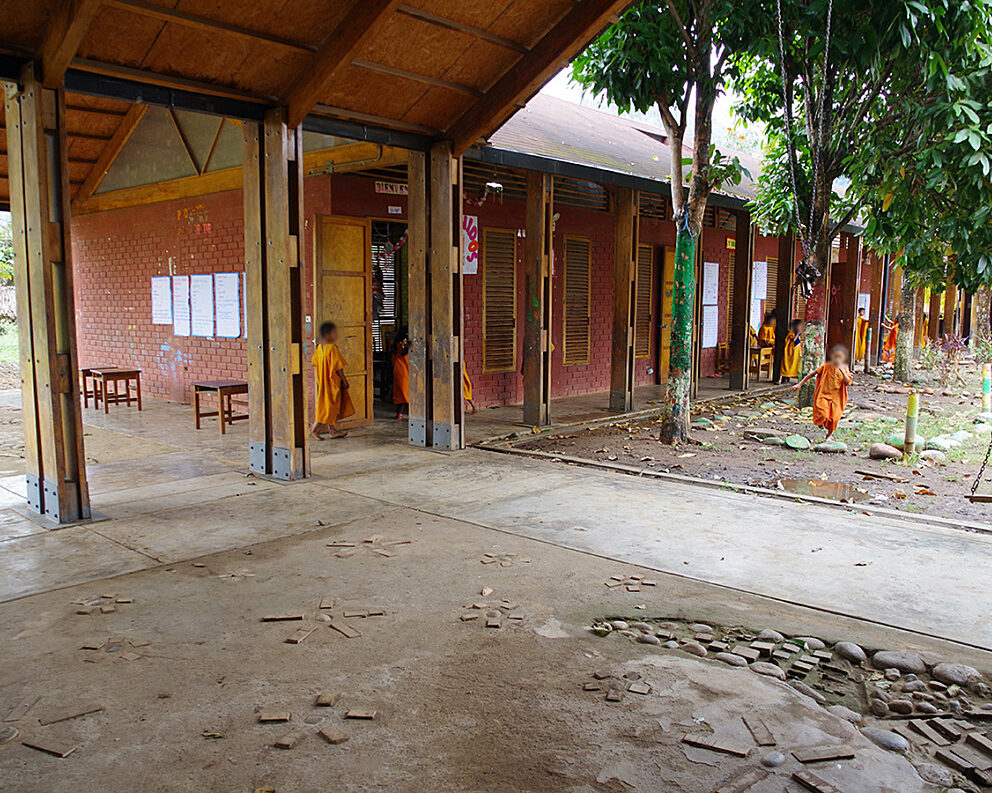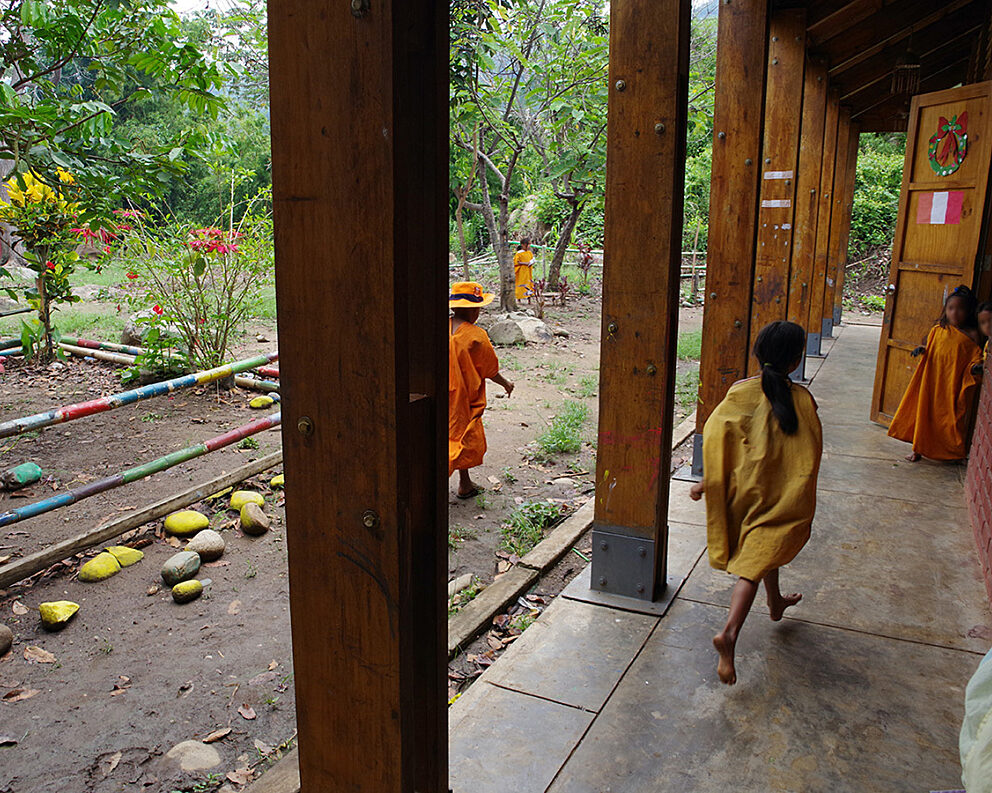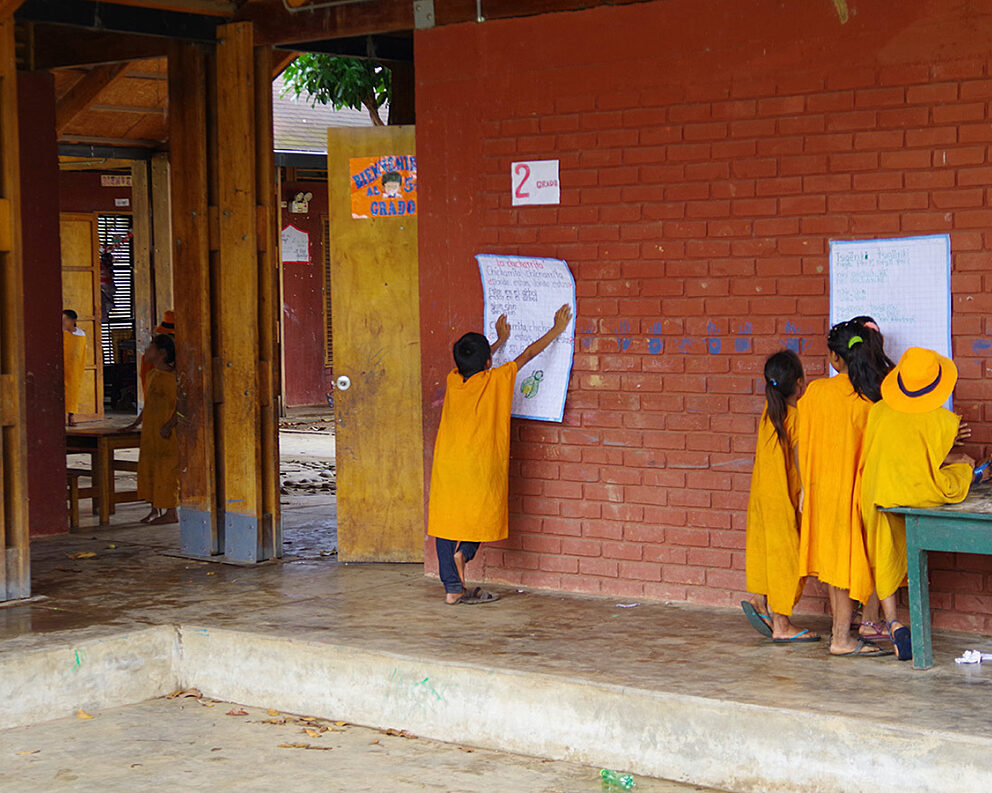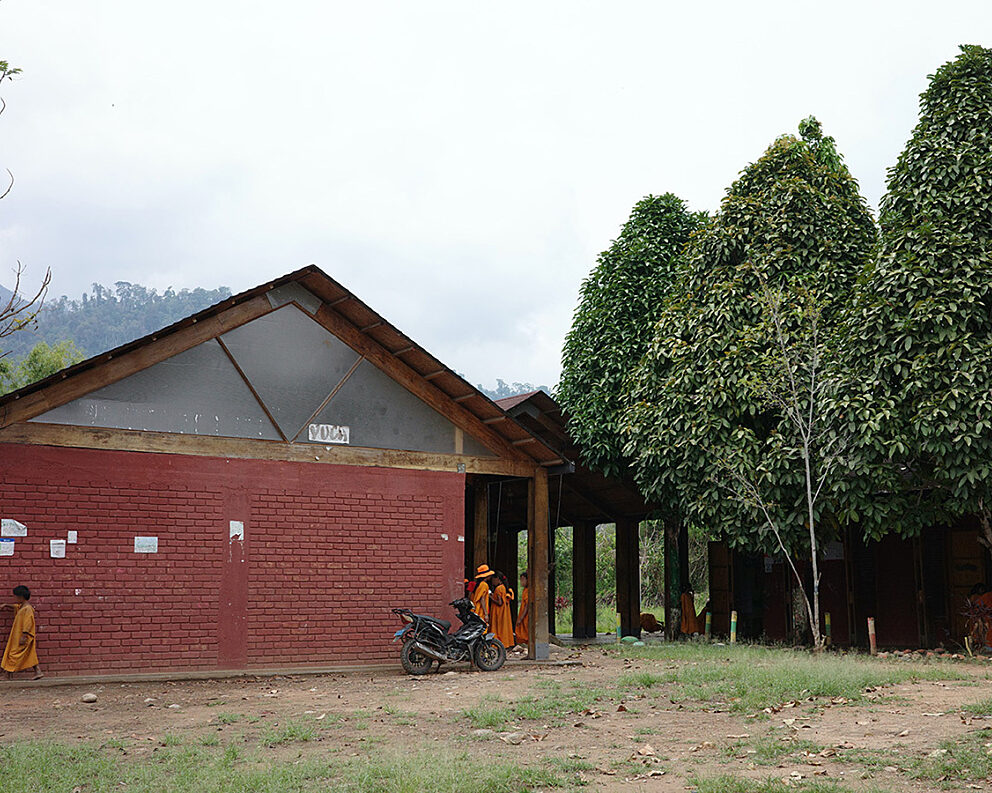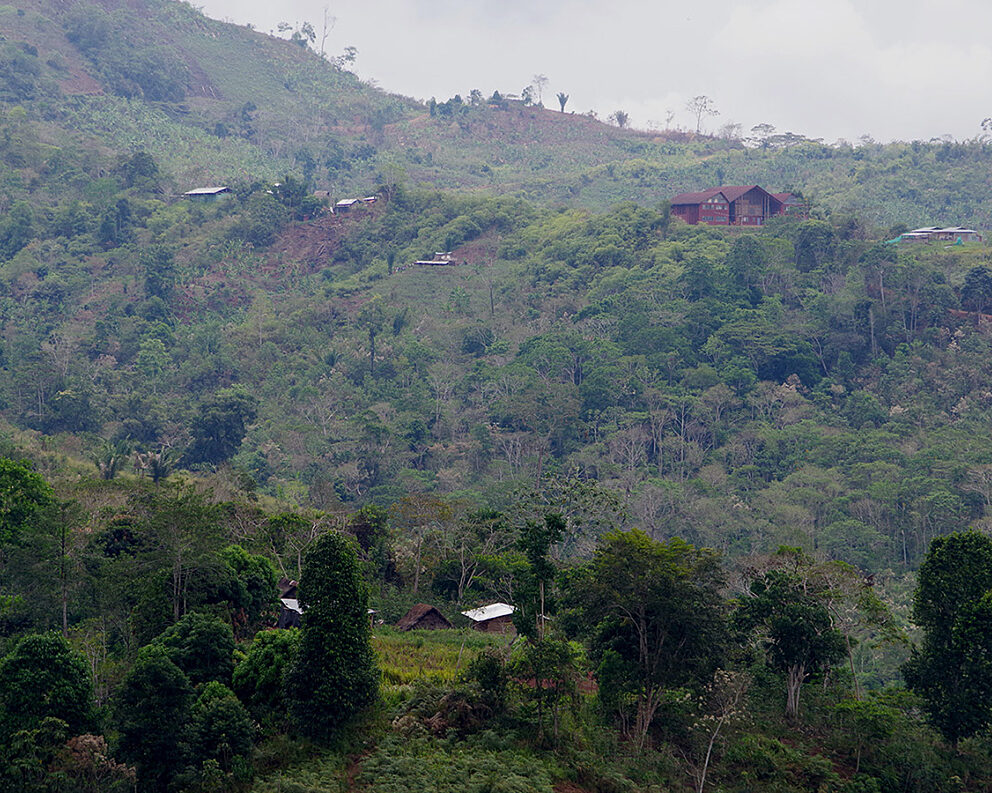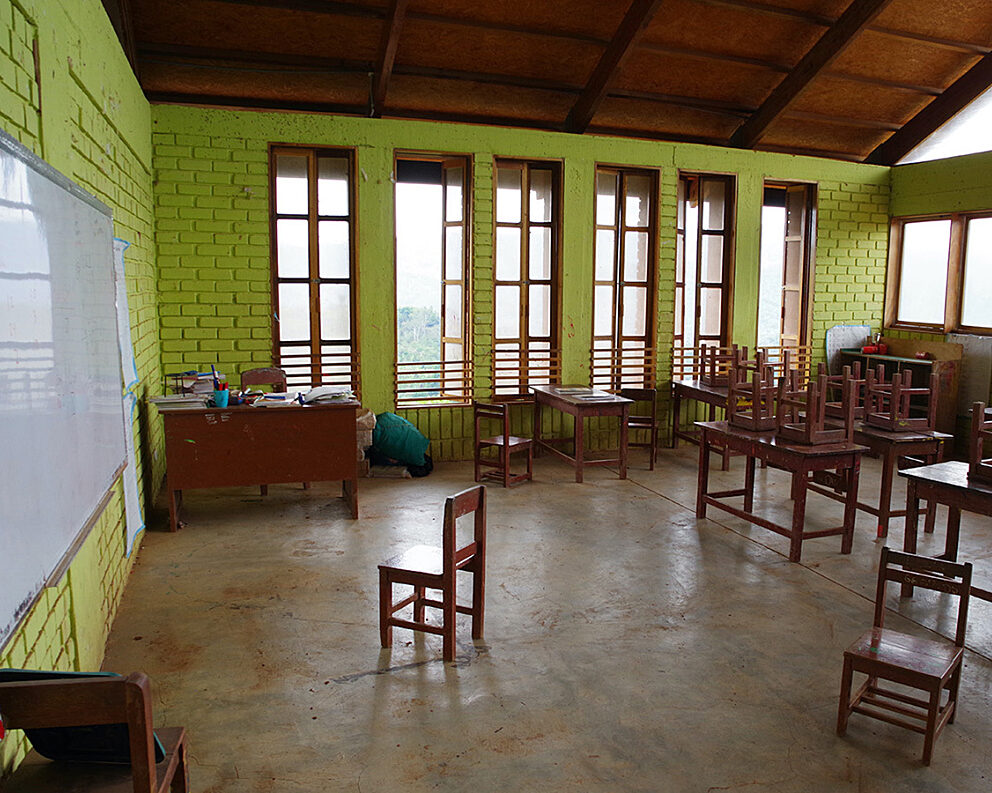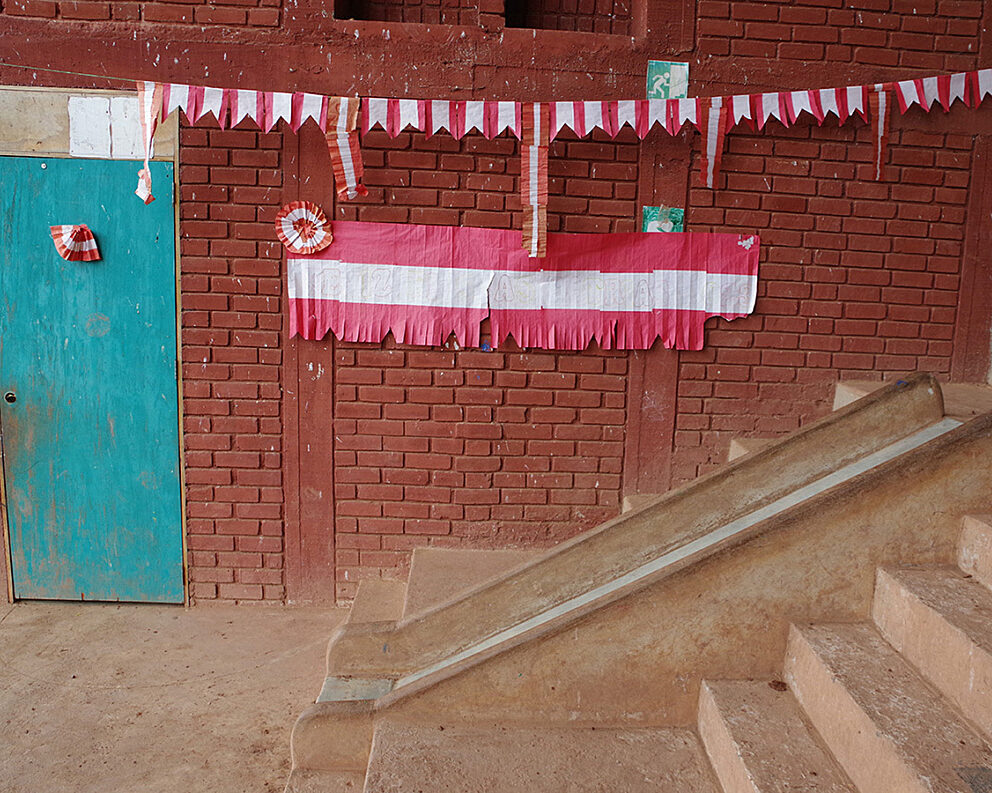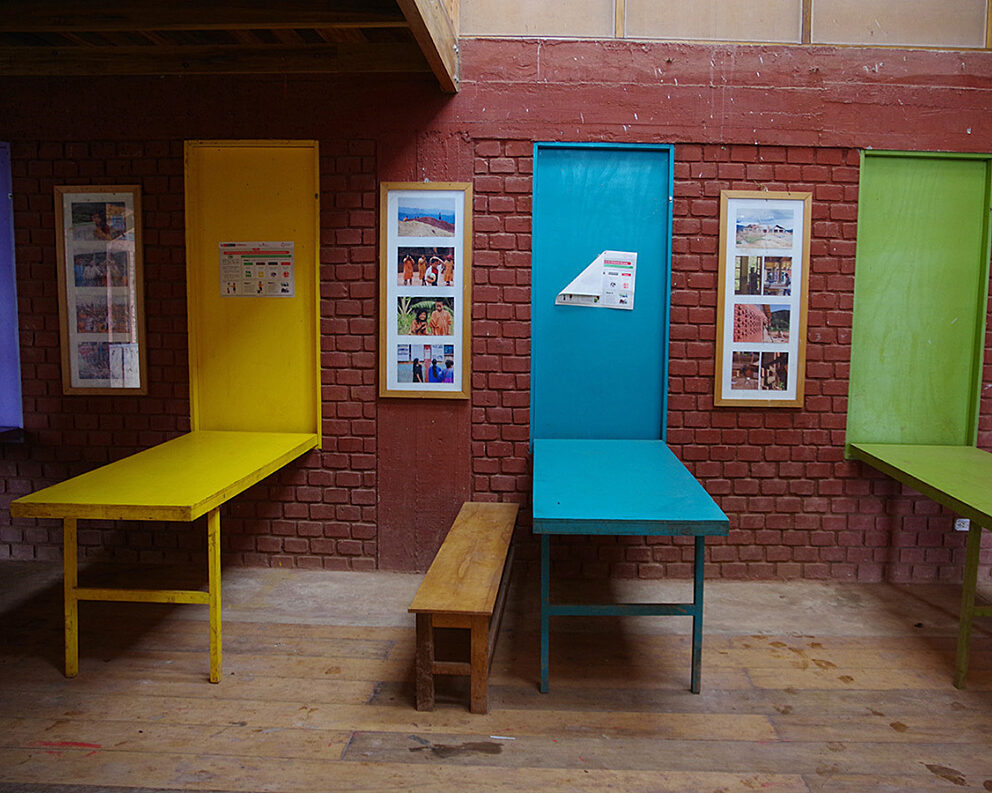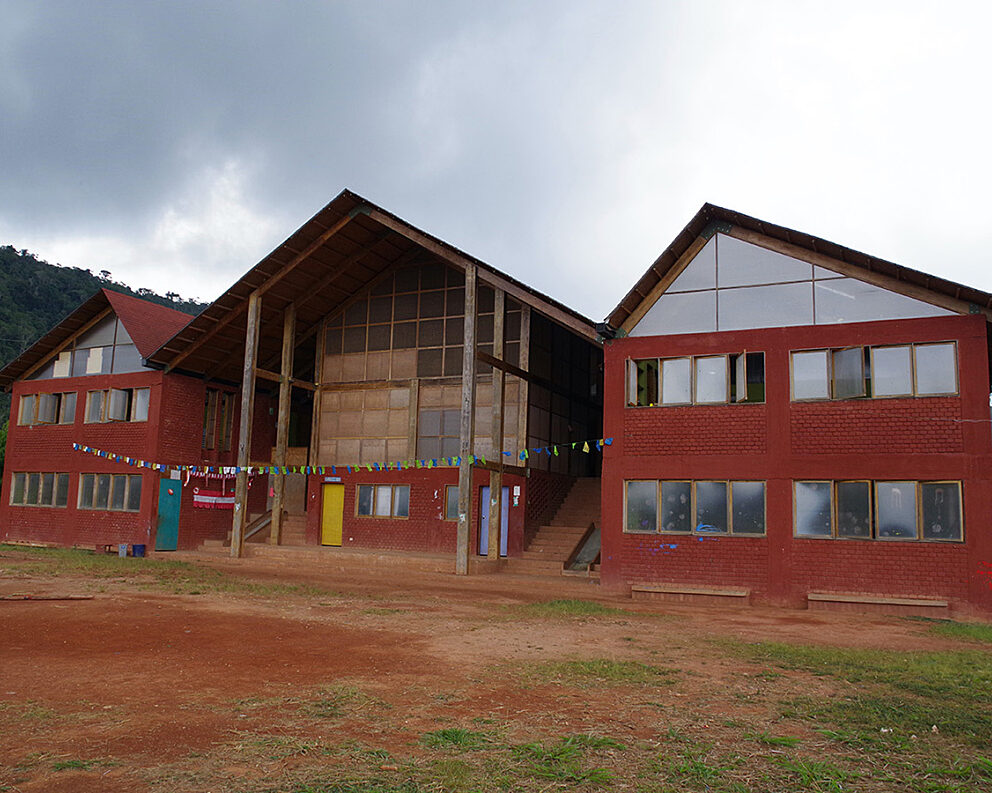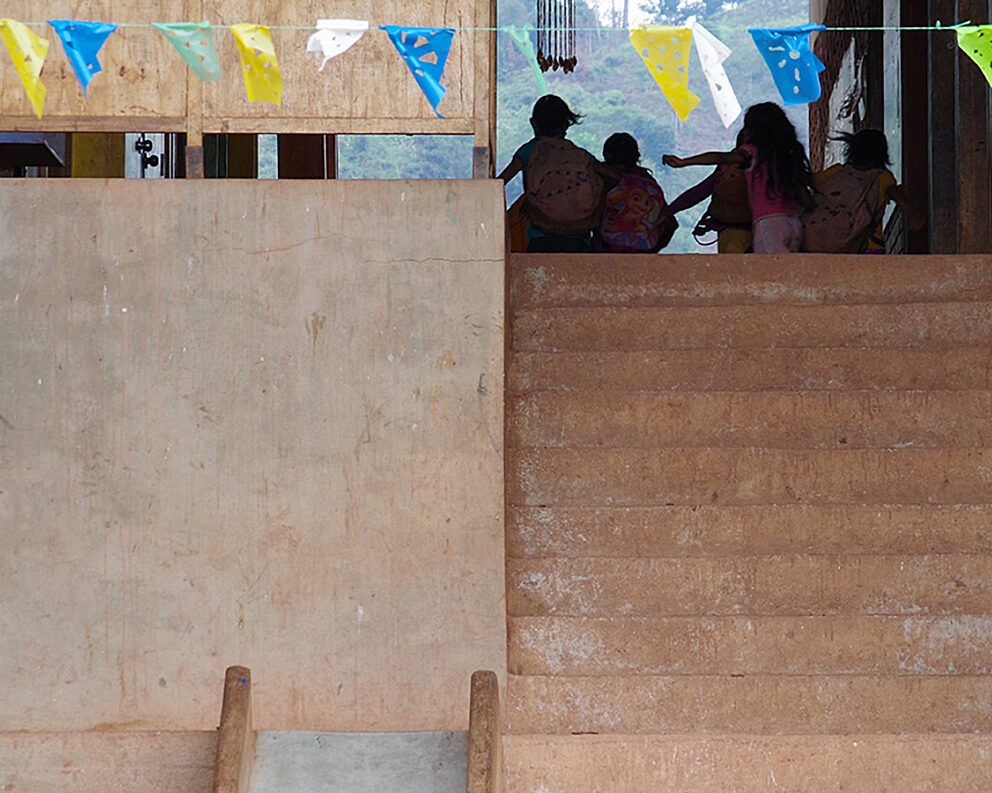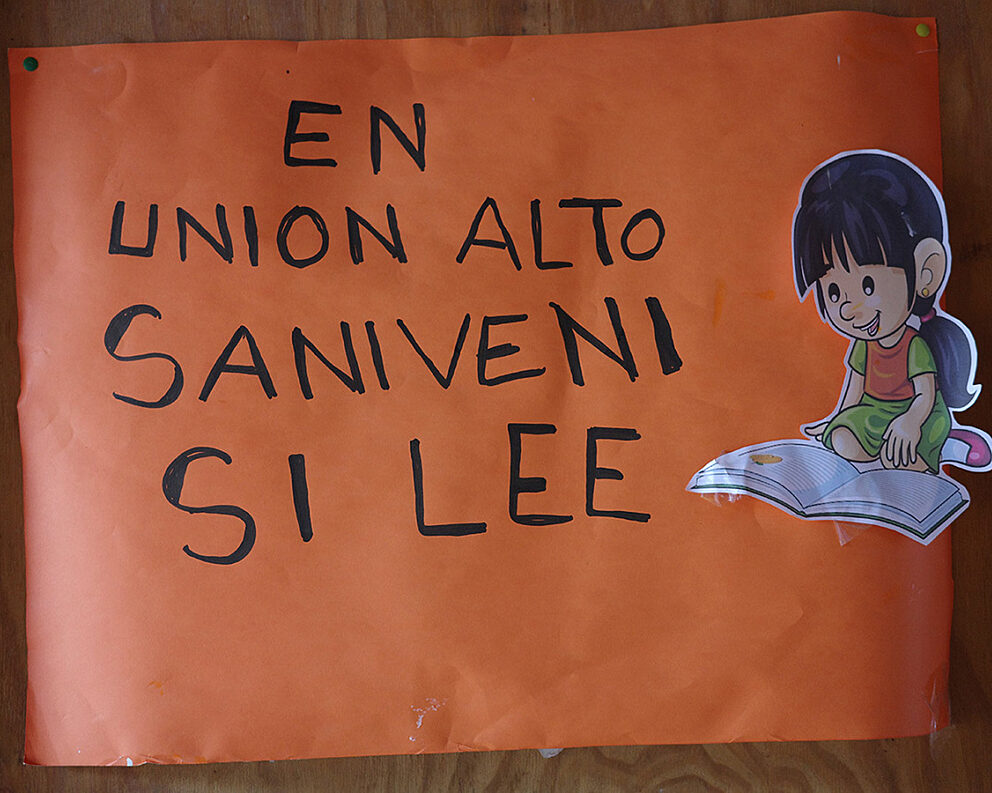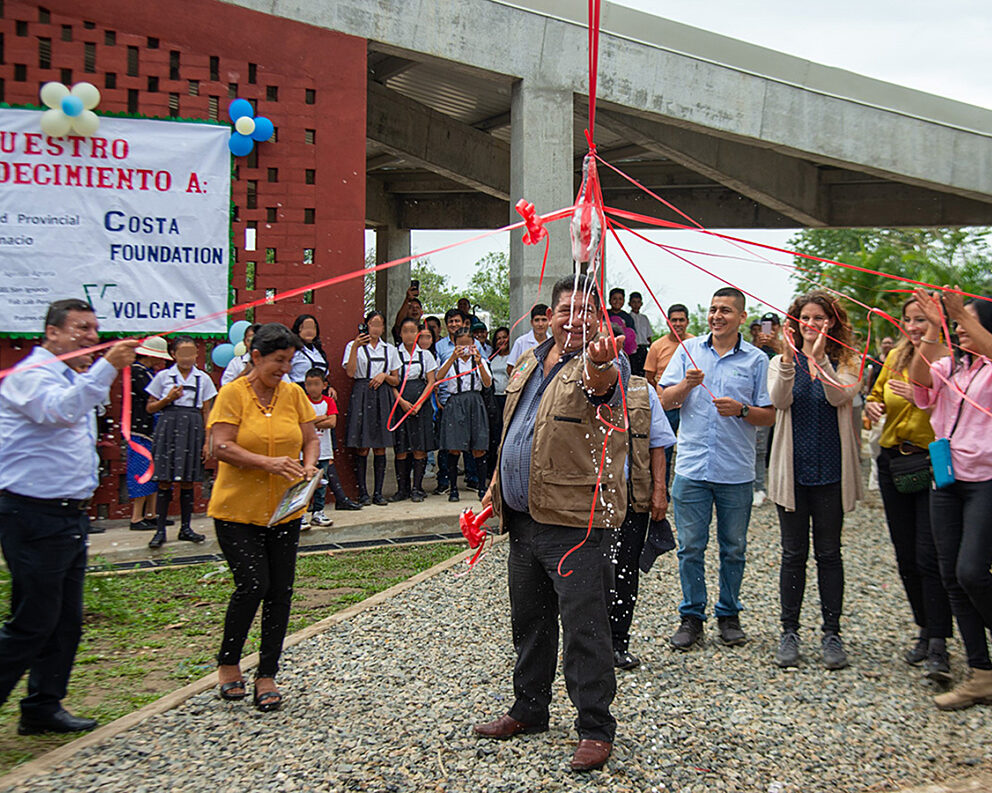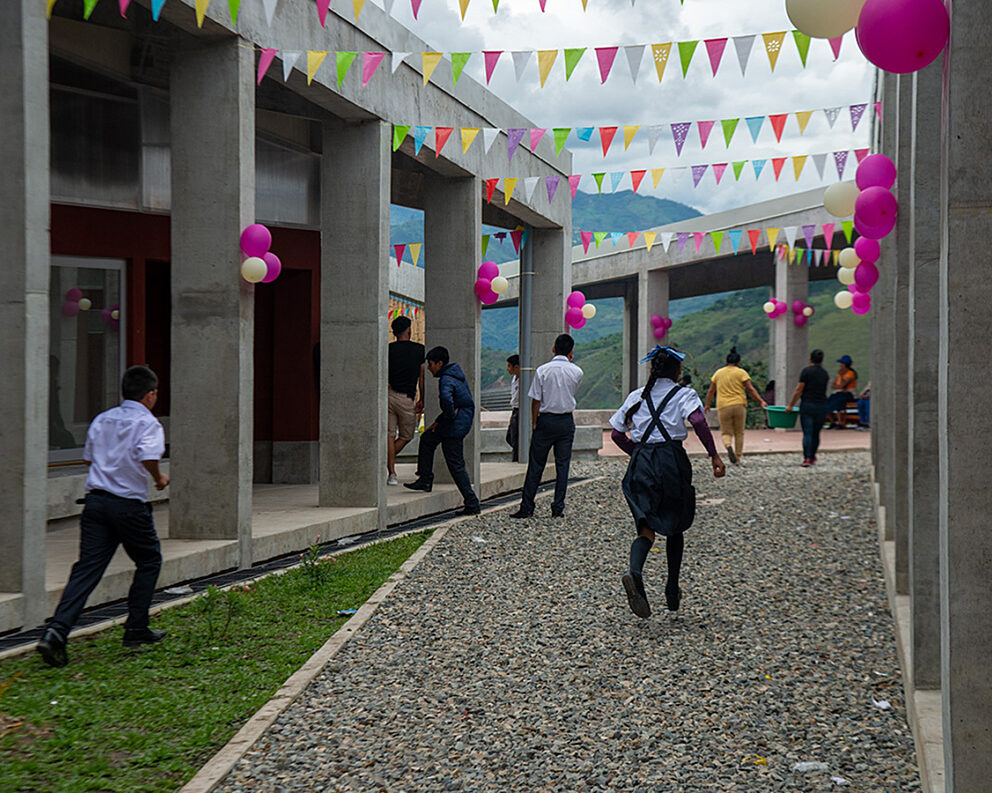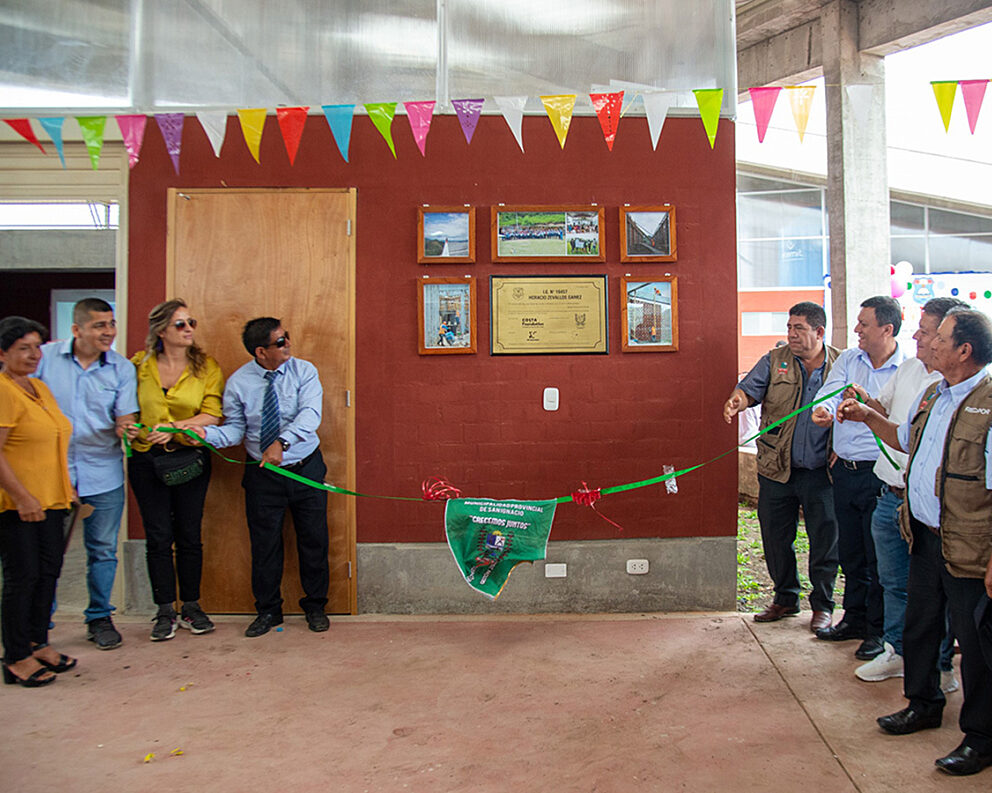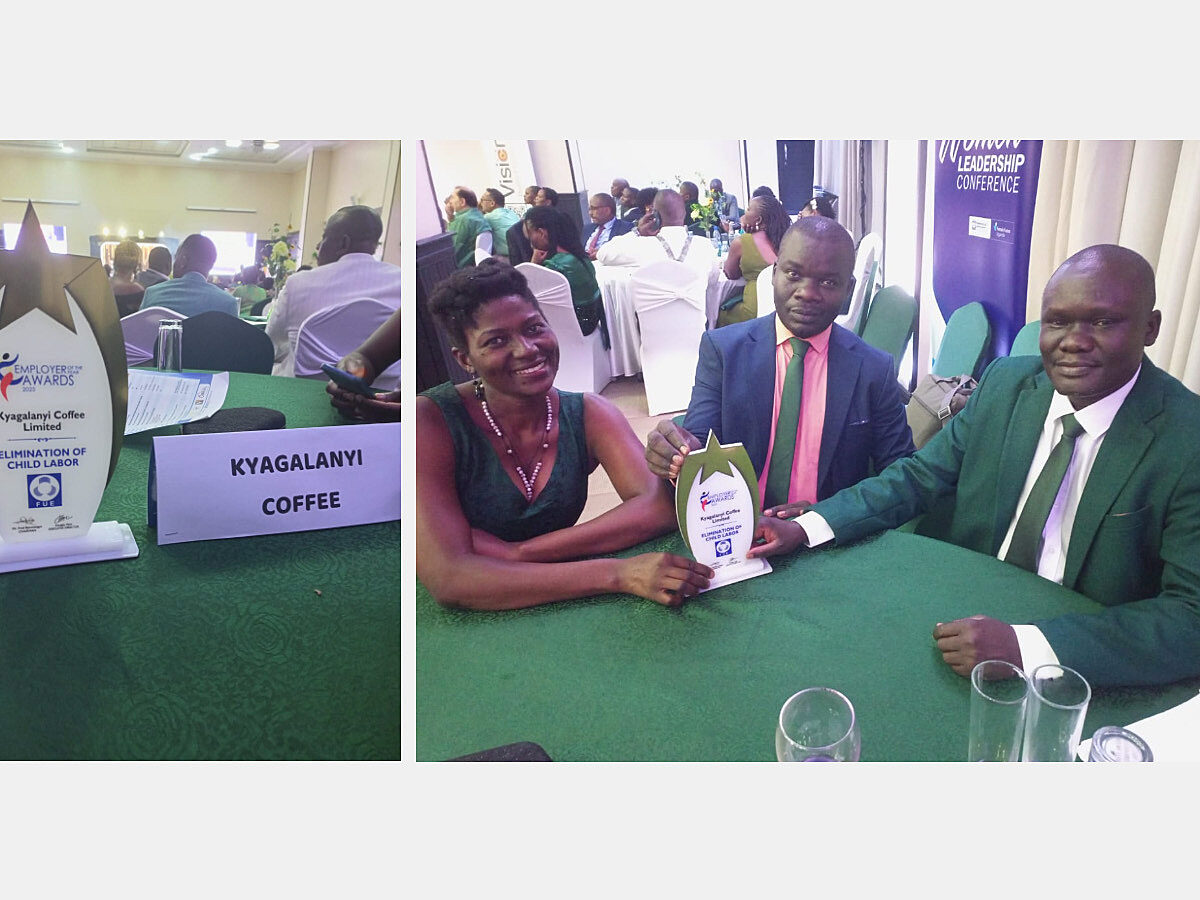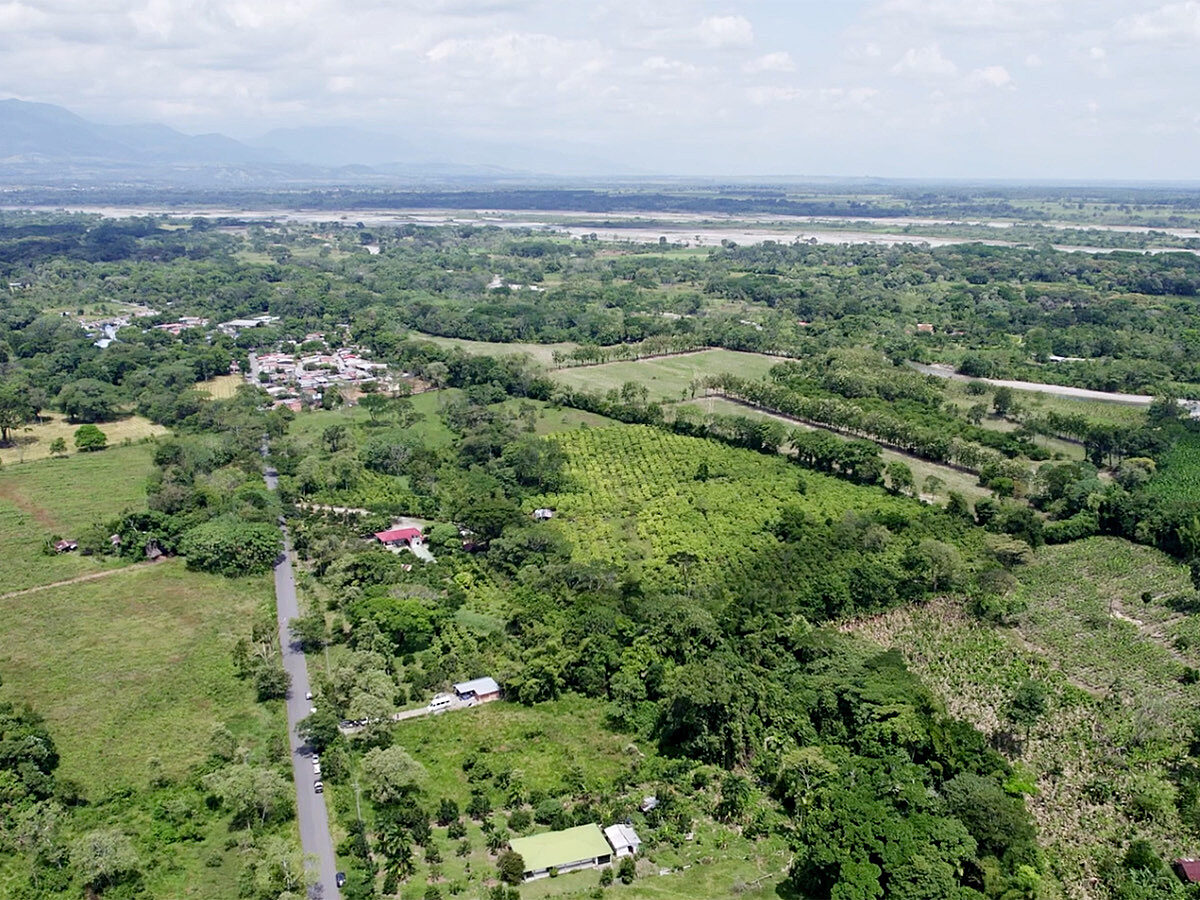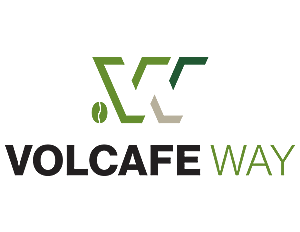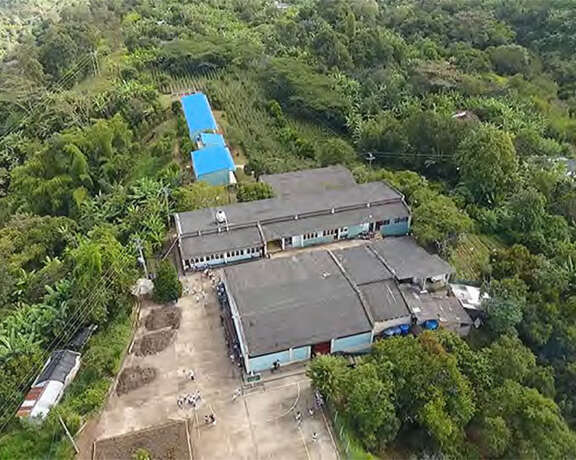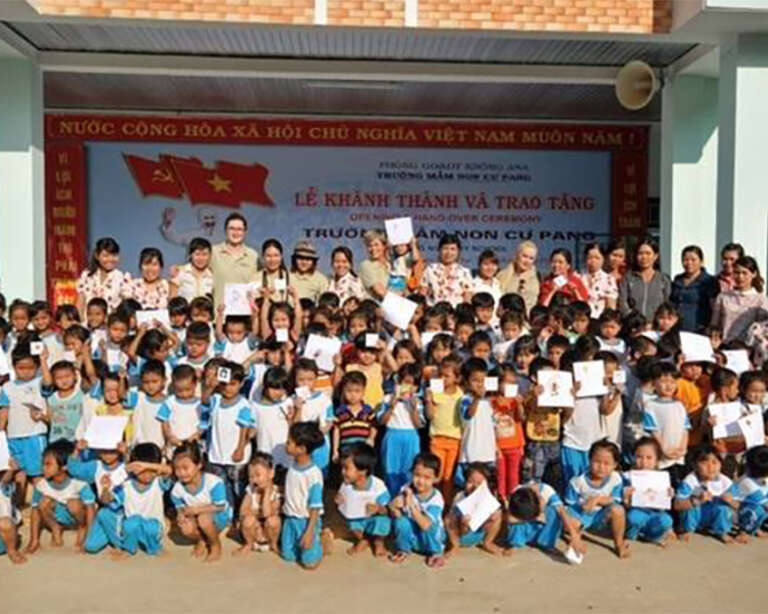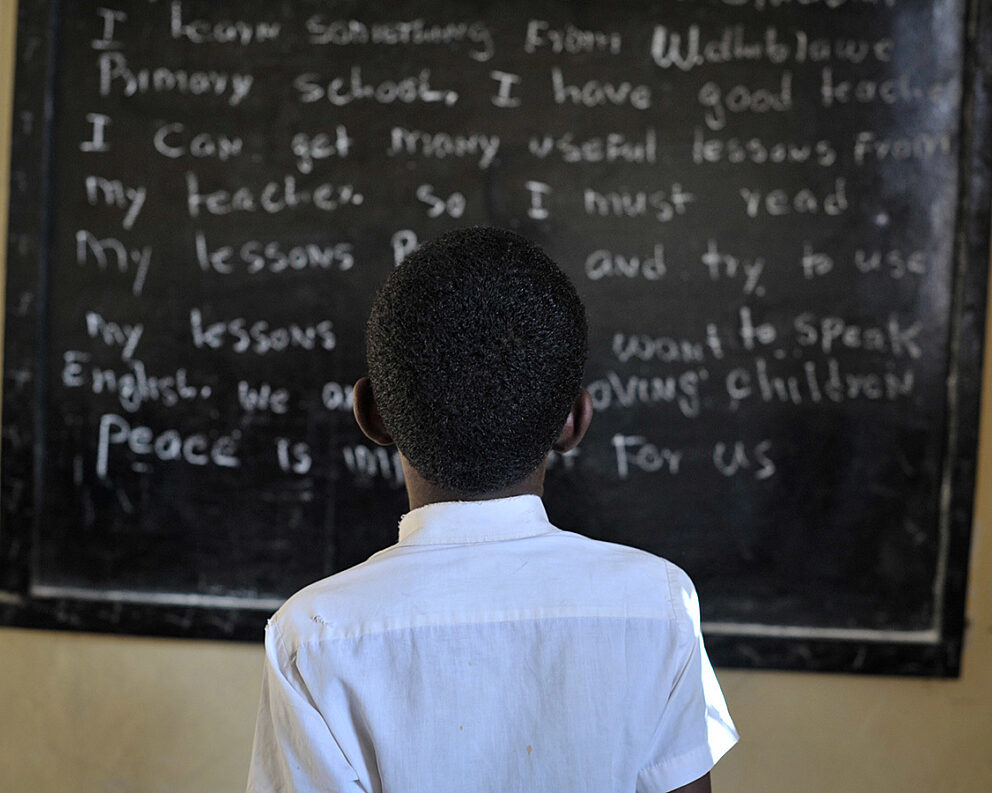School partnership plants seeds for brighter futures in Peru
Long-term alliance builds unique schools in coffee communities
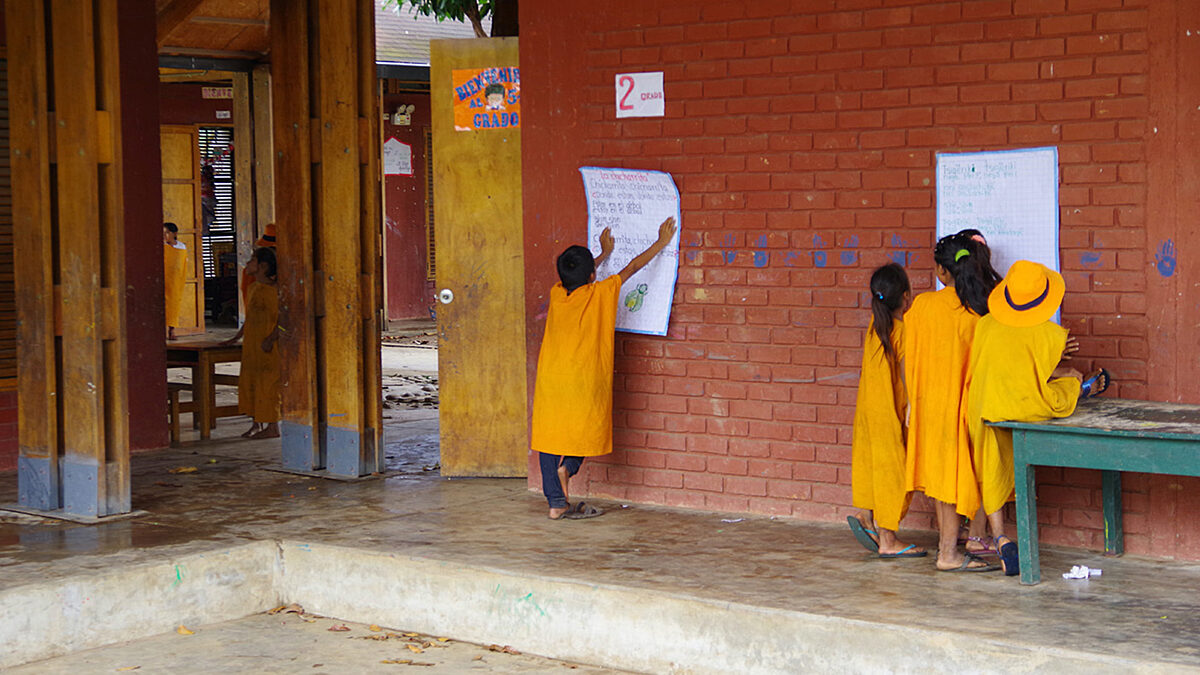
Through clever schools, the partnership promotes children's education in coffee communities
Schools and access to education open so many prospects to children, providing a lifelong foundation of knowledge and shared social relations. When children lack access to schools or cannot reach them safely, it increases the likelihood they will miss out on this crucial formative experience. It can also augment the risk they may fall into situations of child labour or other exploitation.
Around the world, Volcafe works with partners to improve access to education as part of our sustainability strategy, which includes a focus on responsible citizenship.
Since 2013 Volcafe Peru has worked with the Costa Foundation and Semillas, an innovative architectural NGO, to design and construct eight schools in rural areas of central and northern Peru. These schools now serve more than 900 children each year.
Long-standing partners
Volcafe has enjoyed a successful partnership with the Costa Foundation – the charitable foundation of roaster-retailer Costa Coffee – since our first project together in Vietnam in 2010. With our mutual focus on supporting coffee-growing communities, together we have worked to improve educational access through school construction and educational support in Colombia, Peru, and Vietnam.
The Costa Foundation provided funds for all the Peruvian school projects featured in this story.
To conceptualise and construct the schools, we work with Asociación Semillas para el Desarrollo Sostenible, an award-winning nonprofit architectural agency founded in 2014 by Italian architect Marta Maccaglia. Semillas, ‘seeds’ in Spanish, embodies the idea that schools are critical in allowing young minds to grow and blossom. Semillas specialises in participatory approaches to design and using locally available materials to deliver multifunctional buildings that serve many community needs.
In addition to Lima, Semillas has offices in San Ignacio, Cajamarca and Pangoa, Junín – also home to two of Volcafe Peru’s buying stations, where our local teams purchase coffee from farmers and provide them with technical support through our Volcafe Way programme.
Fittingly for these partners, many of the school projects we’ve collaborated on serve communities where coffee growing is an important way of life.
The new schools created through this partnership bring notable improvements to communities. Sometimes they replace a previous structure, other times they are the first school in a village.
As teacher Lady explains, the conditions at her previous school in Unión Alto Sanibeni were far from ideal: ‘It didn’t have good infrastructure. For example, the nursery was made of wood and when it rained, water came in. The materials we hung on the walls would get wet, and this was really difficult for us as we didn’t have many materials… There was an earthen floor, and when the children played they’d get their clothes and hands dirty, and we didn’t have running water so there was nowhere to wash their hands.’
My school before, it was ugly
Paulo, an administrator, recalls earlier times at the Chuquibambilla school: ‘There were communal classrooms, improvised classrooms with roofs made of reeds and boards that we teachers built ourselves since there was nowhere to give lessons.’
Angelina, a young student, put it plainly: ‘My school before, it was ugly.’
To achieve a building that truly suits the community’s needs, the project team uses a participatory approach during planning and construction. ‘We begin with a process of participatory rural diagnosis in which we create links with the community, we get to know each other and build trust,’ explains Marta Maccaglia, the director of Semillas.
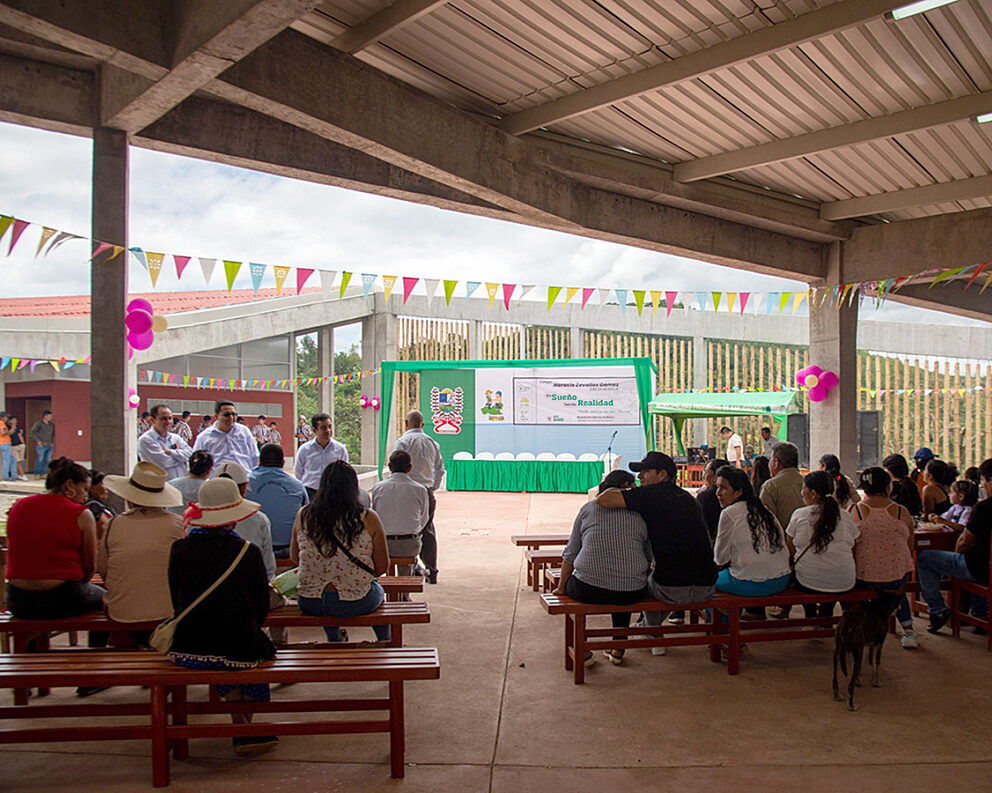
Schools are central to communities. Image: Semillas
‘Then we do participatory design workshops where we explore the children’s dreams and visions as well as the community activities and needs,’ continues Maccaglia. ‘Next is the design of the architecture – we meet in the office and try to reflect all those dreams in the designs, because what is architecture? Architecture is the art of making spaces and what we want as architects is that those spaces can improve the lives of the people.’
Conscious effort is made to involve local residents – for instance, handmade bricks are commonly used components that local craftspeople can manufacture, and community members can help with many tasks, from raising roofs to preparing meals for the workers. All of this enhances the sense of local ownership and pride in the finished buildings.
Maccaglia emphasises that the projects ‘work with local people – neighbours, community members, and we bring our specialist master-builders who help to train the new workers, building capacity locally.’ The school buildings are places of learning, but also of community development, discussion, and recreation.
The entire community benefits from the improved infrastructure and children’s access to education.
In some cases, opening a new school can reduce long journeys by foot or motor vehicle that otherwise hinder children’s attendance. The schools also create a more welcoming, comfortable, and safe space for learning, featuring facilities from lavatories and kitchens to libraries and playgrounds.
‘Our involvement with developing schools is a natural extension of our work to support coffee-growing communities,’ says Roberto Ortiz, General Manager of Volcafe Peru. ‘The entire community benefits from the improved infrastructure and children’s access to education. Supporting thriving communities through responsible citizenship is part of Volcafe’s approach to sustainability.’
‘The Costa Foundation is proud to have partnered with Volcafe and Semillas since 2014 to fund the construction of such beautiful and child-centred schools in Peru. This has enabled many children in rural coffee growing communities to access a safe, quality education. We would like to thank our partners for this successful collaboration and the communities that have contributed to helping to change children’s life stories in Peru,’ says Kate O’Brien, Executive Director of the Costa Foundation.
Portraits of the schools
Here we take a tour of the eight schools built so far in this ongoing partnership. (The links below will take to you to the Semillas website where you can see additional photos, architectural diagrammes, and details about each project.)
Secondary school, Chuquibambilla
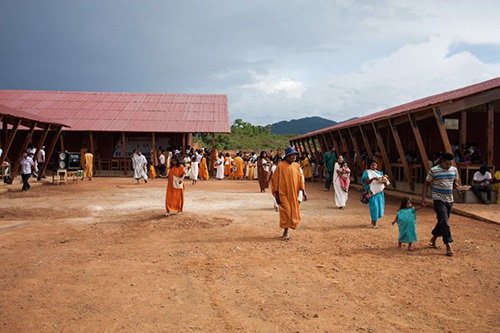
2013 | Chuquibambilla, Pangoa, Satipo, Junín | Marta Maccaglia, Paulo Afonso, Ignacio Bosch, Borja Bosch | Semillas profile
This bilingual school serves the indigenous Nomatsiguenga community at Chuquibambilla. Consisting of three modules around an open courtyard, the complex includes facilities for local youths to study and reside as well as offices for the administration and teachers. During a recent visit, the director informed Volcafe staff about some of the activities students can try their hand at beyond the classrooms, including a model farm and sewing. Some students were also facing off on the volleyball court.
Multipurpose classroom, Mazaronkiari
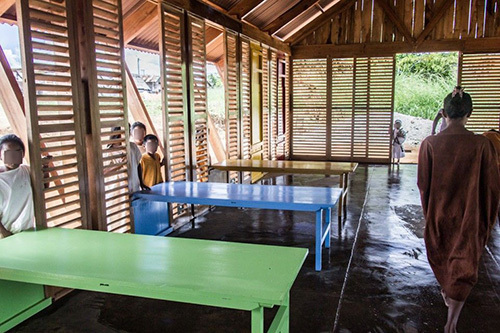
2014 | Mazaronkiari, Pangoa, Satipo, Junín | Marta Maccaglia, Paulo Afonso | Semillas profile
After a nursery school in the Nomatsiguenga community of Mazaronkiari experienced a surge of enrolments (from 30 in 2013 to 120 in 2014), the need for a cafeteria became urgent. Rather than settling for a single-use cantina, the architects proposed a multifunctional space that can serve as a classroom, cafeteria, auditorium, or conference hall, with an attached kitchen. Moving panels allow for different configurations of the space. Outside school hours, community members can also use the classroom as a space for meetings and social gatherings.
Nursery school, Los Ángeles de Edén
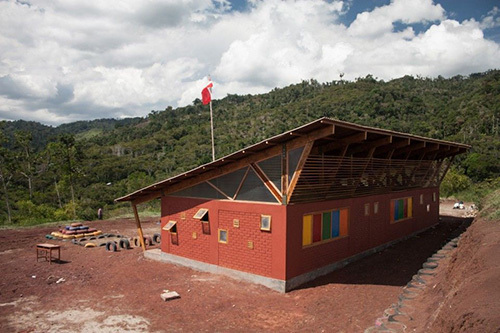
2014 | Los Ángeles de Edén, Mazamari-Pangoa, Satipo, Junín | Marta Maccaglia, Paulo Afonso | Semillas profile
Consisting of two classrooms, a kitchen, washrooms, and a multipurpose patio, the school also features some creative reuse of materials – the playground was made with recycled tyres and rods left over from the construction, while the ceilings are a special type of crushed sugarcane that the parents and children helped to prepare. Volunteers and neighbours also pitched in with the construction effort.
Architecture is the art of making spaces and what we want as architects is that those spaces can improve the lives of the people.
Secondary school, Santa Elena
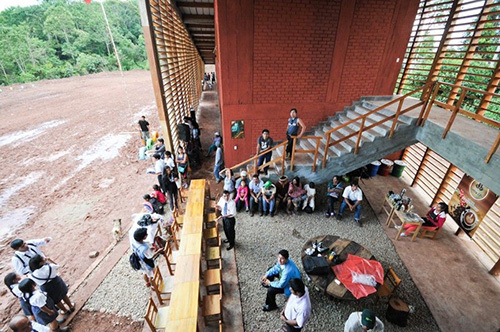
2015 | Santa Elena, Pangoa, Satipo, Junín | Marta Maccaglia, Paulo Afonso, Ignacio Bosch, Borja Bosch | Semillas profile
Developed after extensive consultations with residents, this school was built in a strategic location between several communities that lacked a nearby secondary school. It enables 200 students to continue their education, but also offers open spaces between the classrooms and offices suitable for public use. The school is thus an important community hub in Santa Elena.
Primary school, Jerusalén de Miñaro
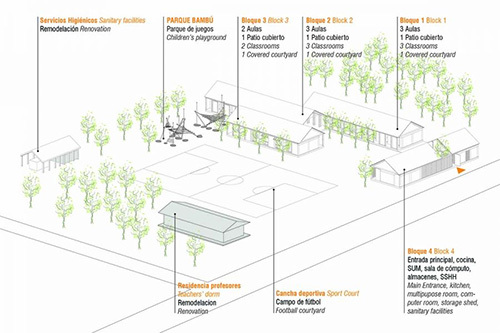
2017 | Jerusalén de Miñaro, Pangoa, Satipo, Junín | Semillas | Semillas profile
This school is located in the indigenous community of Jerusalén de Miñaro, with the pupils typically wearing their traditional orange cushma. The construction incorporated local materials and workers, enabling knowledge exchange with the community. Its three classroom modules are connected by covered walkways and outdoor patios where children can learn and play. A multifunction space completes the complex, serving a variety of purposes for the surrounding community. During a recent visit, Volcafe staff saw how the students use the patios as extensions of their classrooms, hanging posters on the walls where they can avail themselves of the breeze and natural light (and the swings hanging from some of the crossbeams).
This [partnership] has enabled many children in rural coffee growing communities to access a safe, quality education.
Nursery and primary school, Unión Alto Sanibeni
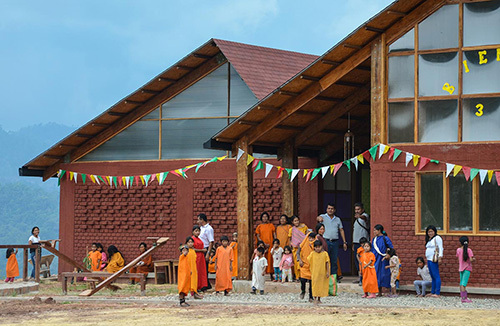
2019 | Unión Alto Sanibeni, Pangoa, Junín | Semillas | Semillas profile
The Unión Alto Sanibeni school is located in an indigenous Ashaninka community, set on a hilltop with views of the surrounding, densely forested valleys and mountainsides. Displaced by armed conflict in the 1990s, the community started returning to the area in 1998 and opened their first school. As that building wore down over time, a new construction was planned in consultation with the community to serve about 200 children and 1,000 residents. The high-roofed structure contains eight classrooms, a library, washrooms, a kitchen, and closets. Open hallways connect the bays, converging on a central ‘plaza’ that uses ingenious touches like fold-down tables to accommodate different needs – eating, meeting, playing. On a recent visit by Volcafe staff, some students had stuck around after school just to play in the open hallways and use the built-in slides (the fun alternative to stairs on the way to the playground).
Primary and secondary school, El Huabo
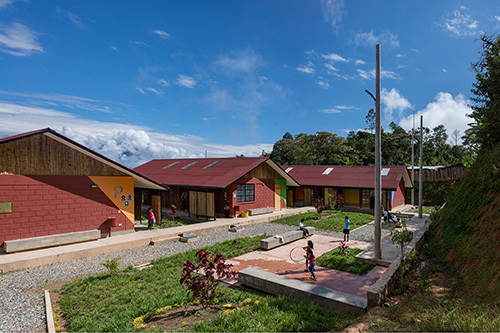
2019-2022 | Caserío El Huabo, San Ignacio, Cajamarca | Semillas | Semillas profile
This project undertook the reconstruction of a primary and secondary school that parents had built from available resources over many decades, until earthquakes left the original structure irreparably damaged. The new school contains two blocks of classrooms and a multipurpose room, with large screens making it possible to open the classrooms to the outdoors. The connecting hallways have nooks with built-in benches to encourage conversation or collaborative activities. There is also a model garden on-site, where students can have a hands-on experience with different plants (including coffee, an important crop in the surrounding region).
Primary and secondary school, La Jalquilla
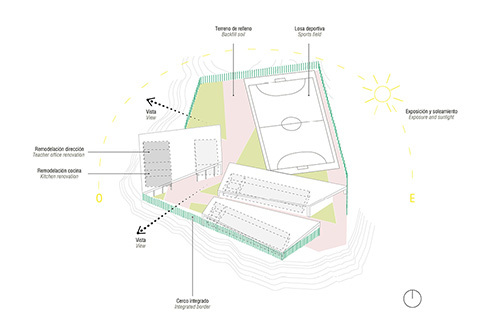
2021-2023 | La Jalquilla, San Ignacio, Cajamarca | Semillas | Semillas profile
Located in a small community in the northern rainforests of Peru, the La Jalquilla school provides learning facilities for more than 110 students. It includes six classrooms, washrooms, offices, a kitchen, a media library, and multipurpose covered spaces, as well as ample outdoor sports facilities. Covered walkways shield students from the equatorial sun and provide additional spaces for learning and recreation.
La Jalquilla school was inaugurated in a special ceremony on 12 March 2024. At such ceremonies, the schools truly become part of the community. Students and parents, representatives of the project partners and the local government, and others attend to hear remarks, enjoy music and special performances, witness the blessing of the building, and cut the ceremonial ribbon to officially open the school. After the ceremony at La Jalquilla, attendees tried out the new cafeteria during a festive lunch and the children explored their new school.
The opening is just the start
Once the schools are inaugurated and classes begin, they come to life. For Paulo, the school administrator, the children respond to their new surroundings: ‘In this new infrastructure, what we most notice in the students is their motivation.’
‘It’s spectacular,’ says Lady, the teacher. ‘It’s the first time I work in such a cosy environment.’
‘In the majority of rural communities, the school is the only public infrastructure, so it’s inevitable that it becomes a social catalyst, a platform of opportunity for all,’ adds Maccaglia.
Working to build these unique schools with remarkably engaged partners like the Costa Foundation and Semillas, Volcafe Peru has found another tangible way to invest in the future of rural coffee-growing regions. By having a safe place to learn in their community, children’s horizons stay open to many possibilities – some may even become the next generation of architects designing projects like these.
Quick facts
Country: Peru
Objectives: Promote children's education through school construction; support coffee communities with needed infrastructure.
Timeline: 2013 onward
Impact: Participatory design and construction of eight unique schools in rural coffee communities, serving 900 children each year; many of the schools house multipurpose areas of use to the wider community.
Want to learn more?
Watch these short documentaries from our partner Semillas discussing the process to build several of these schools, with interviews and footage from all stages of development (in Spanish).
Marie Renou-Ullrich, Head of Marketing and Communications, email hidden; JavaScript is required


